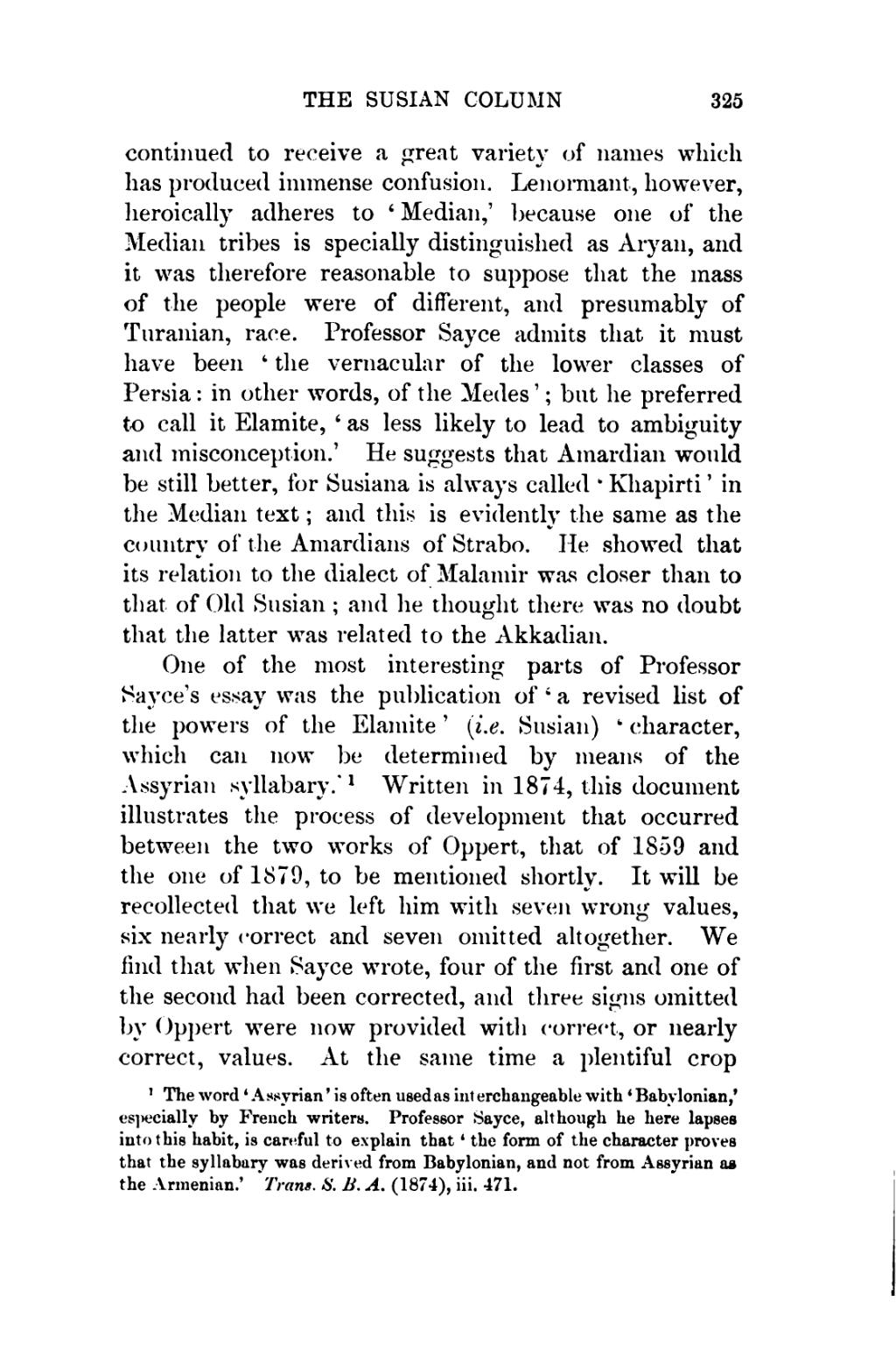continued to receive a OTeat variety of names which has produced innnense confusion. Lenormant, however, lieroically adheres to ' Median,' because one of the Median tribes is specially distinguished as Aryan, and it was therefore reasonable to suppose that the mass of the people were of different, and presumably of Turanian, race. Professor Sayce admits that it must have been ' the vernacular of the lower classes of Persia : in other words, of the Medes ' ; but he preferred to call it Elamite, ' as less likely to lead to ambiguity and misconception.' He suggests that Amardian would be still better, for Susiana is always called ' Khapirti ' in the Median text ; and this is evidently the same as the country of the Amardians of Strabo. He showed that its relation to the dialect of Malamir was closer than to that of Old Susian ; and he thought there was no doubt that the latter was related to the Akkadian.
One of the most interesting parts of Professor Payee's essay was the publication of ' a revised list of the powers of the Elamite ' {i,e, Susian) ' character, which can now be determined by means of the Assyrian syllabary.'^ Written in 1874, this document illustrates the process of development that occurred between the two works of Oppert, that of 1859 and the one of 1879, to be mentioned shortly. It will be recollected that we left him with seven wrong values, six nearly correct and seven omitted altogether. We find that when Sayce wrote, four of the first and one of the second had been corrected, and three signs omitted by Oppert were now provided with con*ect, or nearly correct, values. At the same time a plentiful crop
^ The word * Assyrian ' is often usedas int ercbaugeable with * Babylonian,* es])ecially by French writers. Professor Sayce, although he here lapses into this habit, is can^ful to explain that * the form of the character proves that the syllabary was derived from Babylonian, and not from Assyrian as the Armenian.' Trans. S. B. A, (1874), iii. 471.
